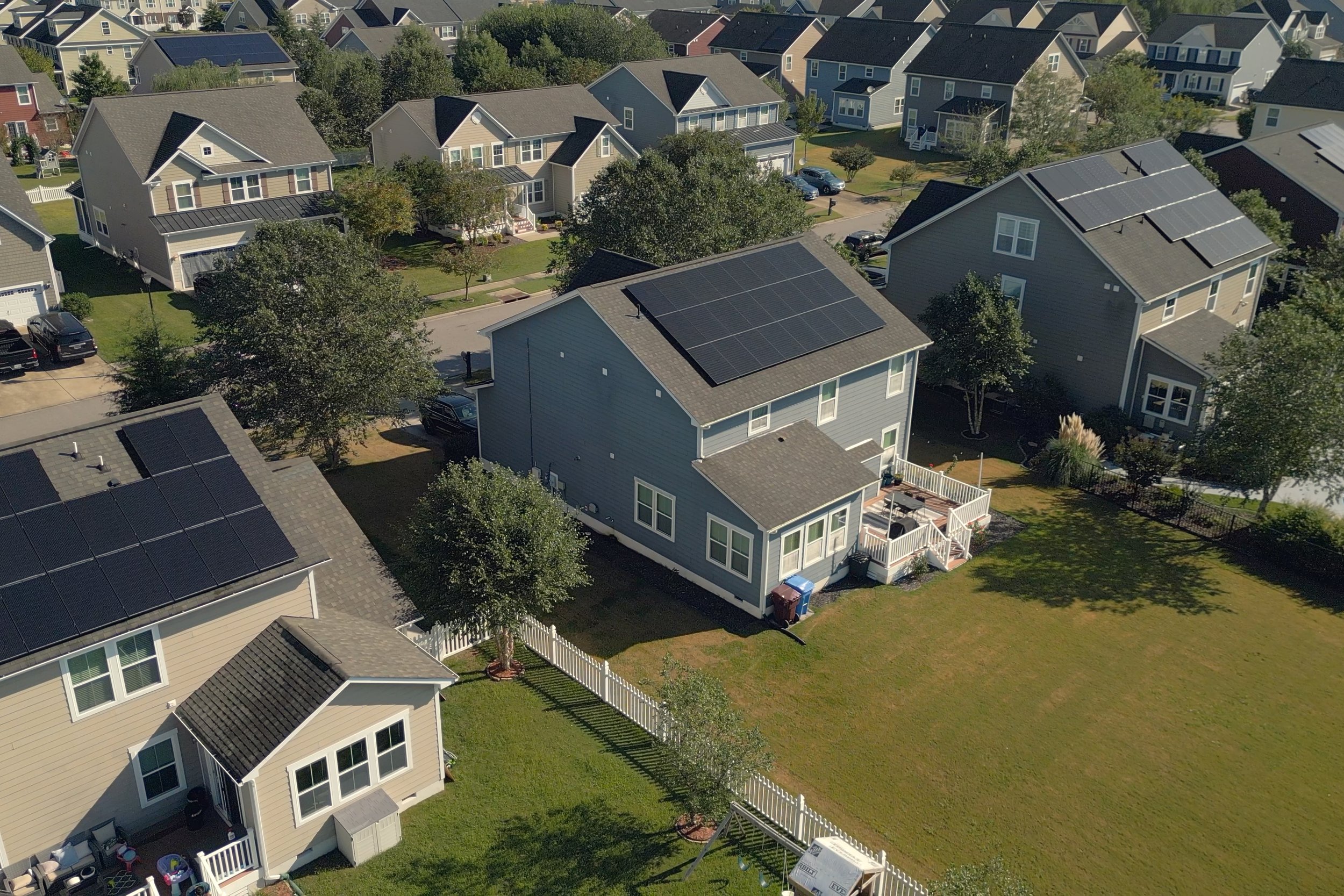
SOLAR 101
YOUR GUIDE TO THE SOLAR PROCESS
Solar energy is the most abundant power source on Earth. Every hour, the sun sends more energy to our planet than the entire world consumes in a year. Roughly 70% of that energy is absorbed by the Earth’s atmosphere. Thanks to modern technology, we can harness a portion of that sunlight and convert it into usable electricity through solar panels.
Homeowners, businesses, and schools across the country are choosing to make the switch to solar. Why? Because it’s a reliable, renewable alternative to traditional utility power, and it often comes with big savings. With solar, you’re not just reducing your monthly electric bill; you’re also reducing your carbon footprint.
Whether you’re just beginning your research or already considering a switch, this page covers everything you need to know about how solar panels work and what makes up a solar energy system.
-
Here’s a simple breakdown of the process:
Sunlight hits the solar cells inside your panels.
Photons excite electrons, creating direct current (DC) electricity.
An inverter converts DC to alternating current (AC) electricity—the kind your home uses.
The electricity is then used, stored, or sent to the grid, depending on your setup.
-
A solar system is more than just panels on your roof, it’s a combination of key components that work together to generate and deliver power. These include:
Solar Panels – Convert sunlight into electrical energy.
Inverters – Transform DC electricity into usable AC electricity.
Mounting/Racking Hardware – Secures panels at the optimal angle and orientation.
Monitoring Technology – Tracks system performance, energy output, and alerts for any issues.
-
Solar panels are devices that capture sunlight and convert it into usable electricity. They do this using “photons” — the energy particles in sunlight — which activate an electrical current when they interact with the solar cells inside each panel.
Solar panels are typically installed together in a group (known as an array) on rooftops or other surfaces to generate enough energy for a home or business. Any extra energy produced during the day can either be stored or sent back to the grid.
Each solar panel (also called a module) contains layers of specialized materials — usually silicon-based solar cells — along with metal framing, wiring, and a protective glass covering. A typical panel is around 4 feet wide by 6 feet tall and weighs about 30 pounds.
When sunlight hits the cells, it excites the electrons inside, setting them in motion and creating an electric current. This process is called the photovoltaic effect. Here's how it works:
Sunlight energizes electrons within the solar cells.
These energized electrons move between layers, generating an electrical current.
Internal wiring collects this current and sends it toward the inverter.
-
Your solar panels generate direct current (DC) electricity, but homes and businesses run on alternating current (AC). That’s where inverters come in. They convert the electricity from DC to AC so it can be used in your home.
There are three common types of inverters:
1. String Inverters
All panels are connected to a single centralized inverter. This is a cost-effective, time-tested option, but its performance can be affected by shading or if one panel underperforms.
2. Microinverters
Installed on each panel, microinverters optimize performance panel by panel. Even if one panel is shaded, the others remain unaffected. Microinverters also allow for individual monitoring and faster system shutdowns, but they come at a higher price point.
3. Power Optimizers
These systems blend string inverter affordability with some of the performance benefits of microinverters. Optimizers are installed at each panel to condition the electricity before sending it to a centralized inverter, improving performance in complex or partially shaded layouts.
-
Your panels need to be securely fastened for optimal sunlight exposure. That’s where mounting and racking hardware comes in.
Most residential systems use fixed mounts, which hold the panels in place at an angle, ideally between 30° and 45°, facing south for maximum exposure. Ground-mounted systems may use tracking mounts, which follow the sun’s path throughout the day to capture even more light.
The mounting system includes rails, clamps, flashings, and other hardware, and your installer will determine the best configuration for your roof or property.
-
Performance monitoring technology allows you to keep tabs on your solar system’s energy production and health. With the right monitoring setup, you can:
Track system output by the hour, day, or month
Monitor how much energy you’re producing and consuming
Spot performance drops or maintenance issues early
Receive alerts if there’s a problem
Measure savings over time
Some monitoring platforms are accessible via mobile apps or online dashboards, making it easy to stay informed from anywhere.
-
Kilowatt (kW) measures the capacity of your system, calculating how much energy it can produce at once.
Kilowatt-hour (kWh) measures the amount of energy used or produced over time. This is what appears on your power bill.

